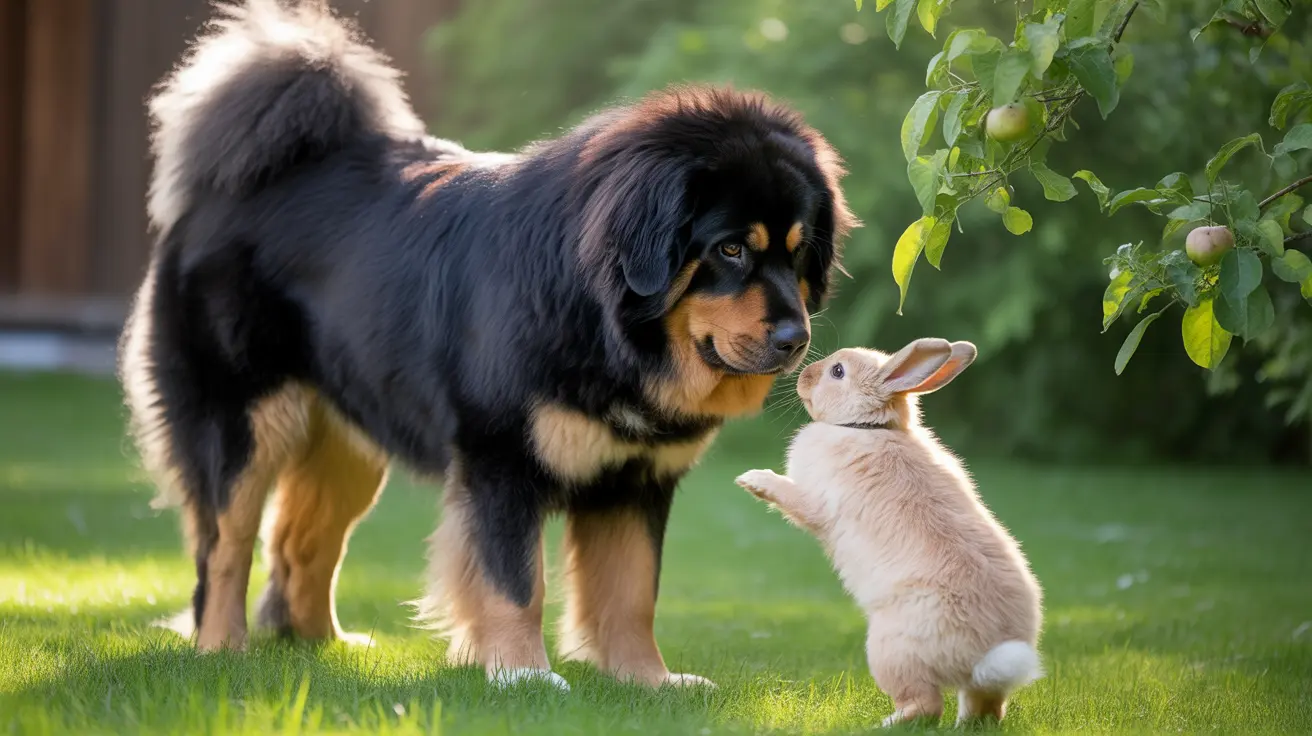Finding out your dog ate a rabbit can be an alarming experience for any pet owner. While dogs are natural predators with instincts to hunt small prey, consuming wild rabbits can pose various health risks that require careful monitoring and potentially immediate action.
In this comprehensive guide, we'll explore the potential consequences of your dog eating a rabbit, signs to watch for, and exactly what steps you should take to ensure your pet's safety. Understanding these risks and knowing how to respond can make a crucial difference in your dog's health outcomes.
Immediate Health Concerns After Your Dog Eats a Rabbit
When your dog consumes a rabbit, several immediate health concerns can arise within the first 24-48 hours:
Digestive System Issues
- Vomiting and diarrhea
- Abdominal pain or distention
- Loss of appetite
- Lethargy
- Constipation
Risk of Obstruction
Rabbit bones and fur can cause serious blockages in your dog's digestive system, particularly in smaller breeds. Watch for these warning signs of obstruction:
- Repeated vomiting without passing stool
- Severe lethargy
- Visible abdominal pain
- Complete loss of appetite
- Difficulty defecating
Long-Term Health Risks and Complications
Parasitic Infections
Wild rabbits often carry various parasites that can infect your dog, including:
- Tapeworms
- Roundworms
- Coccidia
- Fleas and ticks
Bacterial and Viral Diseases
Several serious diseases can be transmitted through rabbit consumption:
- Tularemia (Rabbit Fever)
- Bacterial infections
- Potential exposure to other pathogens
Immediate Steps to Take
1. Monitor Your Dog Closely
Keep a close watch on your pet for the first 48 hours, noting any unusual behavior or symptoms.
2. Contact Your Veterinarian
Consult your vet immediately if you observe:
- Persistent vomiting or diarrhea
- Signs of pain or distress
- Lethargy or weakness
- Absence of bowel movements
- Fever
3. Preventive Measures
Take these steps to prevent future incidents:
- Secure your yard against wild rabbits
- Keep your dog on a leash during walks
- Maintain regular parasite prevention
- Update vaccinations as recommended
Prevention Tips for the Future
To minimize the risk of your dog eating rabbits again:
- Install proper fencing
- Train recall commands
- Supervise outdoor time
- Remove any deceased wildlife promptly
- Consider motion-activated sprinklers to deter rabbits
Frequently Asked Questions
What should I do immediately if my dog ate a wild rabbit?
Monitor your dog closely for signs of illness, contact your veterinarian for guidance, and watch for symptoms like vomiting, diarrhea, or lethargy. Keep your dog hydrated and observe their behavior for at least 48 hours.
What are the common symptoms that indicate my dog is sick after eating a rabbit?
Common symptoms include vomiting, diarrhea, loss of appetite, lethargy, abdominal pain, and constipation. More severe signs might include fever, persistent vomiting without defecation, or extreme weakness.
Can my dog get parasites or diseases like tapeworm or tularemia from eating rabbits?
Yes, wild rabbits can transmit various parasites including tapeworms, and diseases such as tularemia (rabbit fever). Regular deworming and preventive care can help protect against these risks.
How can I prevent my dog from hunting and eating rabbits in the yard?
Install secure fencing, supervise outdoor time, train strong recall commands, and consider using deterrents like motion-activated sprinklers. Regular exercise and mental stimulation can also help reduce hunting behavior.
When is it necessary to take my dog to the vet after it has eaten a rabbit?
Seek immediate veterinary care if your dog shows signs of obstruction (vomiting without defecation), severe lethargy, persistent vomiting or diarrhea, fever, or visible pain and distress. Any symptoms lasting more than 24-48 hours warrant a veterinary visit.
Conclusion
While dogs eating rabbits is a common occurrence, it's important to take appropriate precautions and know when to seek veterinary care. By staying vigilant and responding promptly to any concerning symptoms, you can help ensure your dog remains healthy even after such an incident.
Remember that prevention is always better than treatment, so take steps to minimize your dog's access to wild rabbits and maintain regular preventive health care measures. When in doubt, always consult with your veterinarian for professional guidance specific to your dog's situation.






